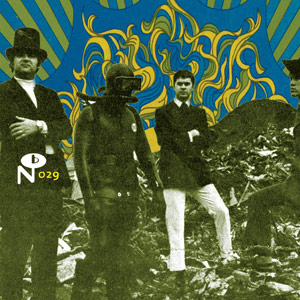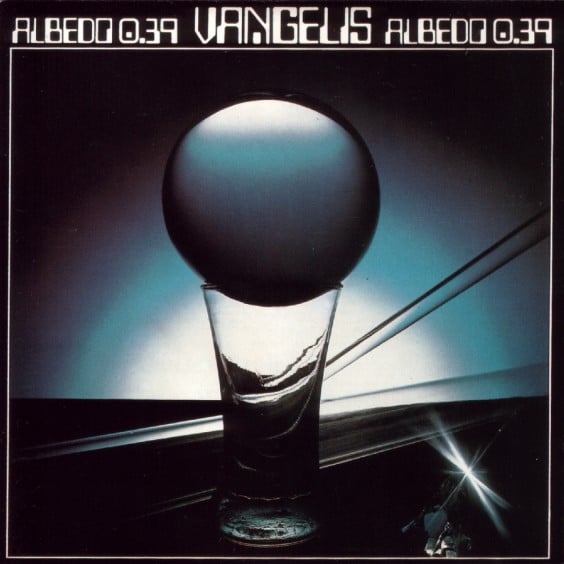
I happened to get a chance to review the Amazon exclusive release of this set, and couldn't pass up the opportunity.
Chants of India is one of my top 10 albums of all time, and the other collaborations of Ravi Shankar and George Harrison definitely do not disappoint. That said, those of you looking for a quasi-Beatles fix may find themselves disappointed - this is very much a product of Harrison serving a student to the master musician that is Shankar, but have no doubt that this is music of the top order. Harrison provides a firm western insight, but he was still on the right spiritual plain to perfectly complement Shankar's vision of Indian music. It's certainly a better fit than the often awkward
East Meets West and
West Eats Meat collaborations Shankar had with western orchestras. Here's some observations on the set:
Disc One - Chants of India - 1996
Quality: 5 out of 5
Trip-O-Meter: 5 out of 5
Despite the marquee names, you won't hear Ravi Shankar's sitar or George Harrison's voice or lead guitar. Still, this is one of the best things that either recorded in their careers. Shankar took it upon himself to arrange a number of ancient Indian chants, while Harrison took on the role of producer and contributes some acoustic guitar parts as well as some instrumental textures such as the vibraphone. This is truly transcendent music - all this album needs to take you on a trip is a ray of sunlight piercing through your window.
A track-by-track review doesn't really seem appropriate when dealing with deeply religious music, so I won't bother. I will say that the chanting is top notch to my ear, while Harrison's instrumental contributions adds a little incentive for the modern rockers among us. Shankar's arrangements do include much of the East with the chanting and drones, but a fair amount of western sounds show up as well with acoustic guitars and some string embellishments wafting over the music. One session of this was recorded in London, while the other two took place in Mumbai. As such, it's not an entirely authentic Indian experience, but it is as near a perfect musical and spiritual experience as you're likely to find on a physical slab of media.
Disc Two - Music Festival From India - 1976
Quality: 5 out of 5
Trip-O-Meter: 4.5 out of 5
These tracks are recordings taken from a European tour produced by George Harrison. Shankar arrived with a chamber orchestra of 17 musicians and serves as conductor rather than sitar player for much of the music. This is definitely the most traditional Indian music of the box set (along with the accompanying DVD) in terms of both song selection and arrangements. Harrison does not play any of the instruments here and there is absolutely no attempt to mix in western influences. The sound here is extremely good even by modern standards - while the press release seems to suggest that these were concert recordings, they sound extremely crisp, clear and well defined.
While
Chants of India focused exclusively on Vedic hymns, this set works in a few different styles of Indian sounds and provides space for more traditional instruments than that later collaboration. Most of the tracks do feature often chanting vocals, although there are a few instrumental passages in the middle of the album. As much as I enjoy Indian music, I'm not a scholar of it or even particularly qualified to intelligently comment on specific songs - I'll just leave it at the fact that everything on this disc is superior music. If you're used to hearing Shankar backed by only a small ensemble, you may find yourself surprised by the opulent sound of this larger group. It definitely evokes images of a lush, royal court in the mountains of northern India.
Disc Three - Shankar Family and Friends - 1974

Quality
: 4.25 out of 5
Trip-O-Meter: 4.5 out of 5
This was one of the first releases on Harrison's Dark Horse imprint, and he's serving here as producer as well as picking up a few of the instruments. Luminaries such as Ringo Starr and Billy Preston also make appearances on he along with the cadre of Indian pros. The first side of the album is a collection of mildly to majorly pop-infected songs. "I Am Missing You" isn't a bad track, but I feel that it's
All Things Must Past filtered through Mumbai sound sort of misses the spiritual bulls-eye that so much of this set hits. I prefer the three other lower key tracks presented one the first side.
Side two is significantly more ambitious, and is a (still unperformed) ballet. The structure of the suite is a little more western in nature and some of the percussion is also from the West (timpani and drum kits), but the sound remains distinctly grounded in Indian sounds. Still, "Lust (Raga Chandrakauns)" drifts into some kind of strange fusion groove, while "Disillusionment & Frustration" finds an interesting way to fit a Moog synthesizer into the Indian aesthetic.
While this is probably my least favorite CD in the set, it's also the most fascinating with plenty of experiments in fusing western and eastern sounds. It's actually probably the best place to start for those getting this set because of Harrison's name on the set. While Shankar is definitely still the main signifier for this music, some of the sounds do reflect what Harrison recorded on his own and with the Beatles and may be more comfortable for the uninitiated western listener.
Disc 4 - Music Festival From India DVD
Quality: 4 out of 5 (3 for video/5 for sound)
Trip-O-Meter: 4.5 out of 5
This is the first release of this recording from the Royal Albert Hall in 1974, which features the same ensemble as disc two of this set. Unfortunately, some of the footage has been damaged and/or lost over the years, so we're not looking at a pristine visual presentation. The 4:3 aspect ratio does look a little mushy and it's clear that we're missing footage. Musicians often appear playing something completely different than what you're hearing on the soundtrack, and they sometimes go for the 'slo-mo' shot, which is a little silly in a live context. Still, I haven't come across much video of classical Indian performances, and it's fascinating to see what the musicians are doing physically.
There are certainly enough positives to give this disc your attention despite it. Harrison is not serving as a musician here, but he does appear giving a noticeably nervous and highly entertaining introduction for Shankar and the group (and admits as much). Shankar is once again serving mostly as conductor for the group, although he does join the sitar section of a bit. The real star of this disc, however, is the soundtrack, which sounds great (especially in 5.1) and features much more music that the album does as this runs at an hour and a quarter.
Final Thoughts
This set is an Amazon exclusive and supposedly limited, so jump on it fast. It's too bad this hasn't seen a wider release and promotion as it really is one of the best music releases of the year. As a musical experience, it's impeccable and the spiritual strain of much of this music is strong and inspiring.
Buy Me:
Ravi Shankar and George Harrison - 2010 - Collaborations
 Quality: 4 out of 5
Quality: 4 out of 5






























